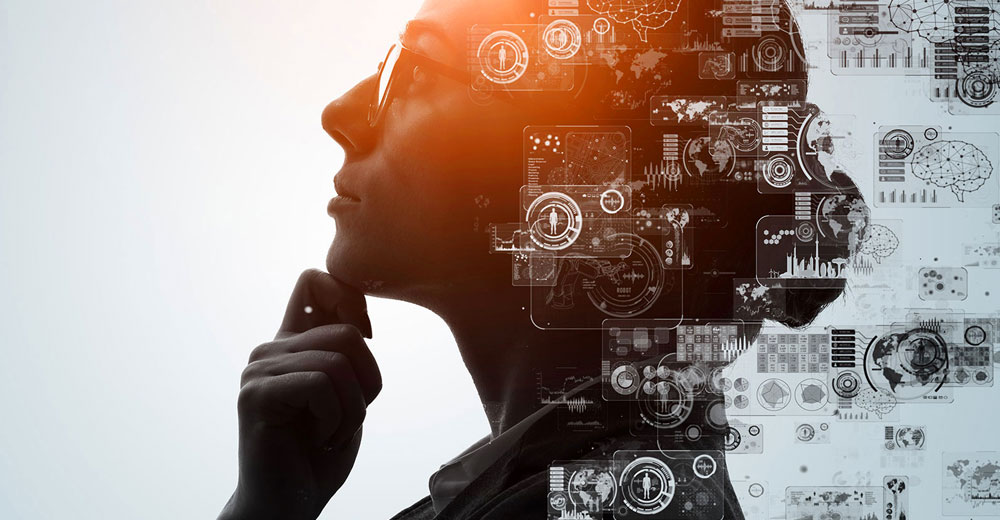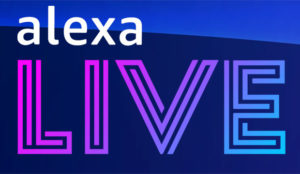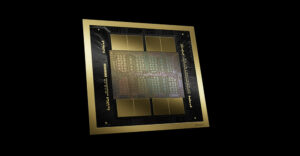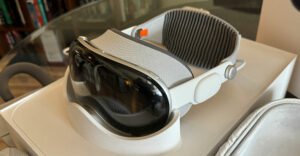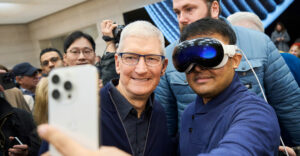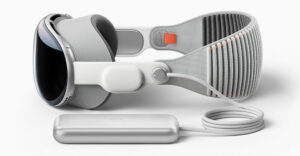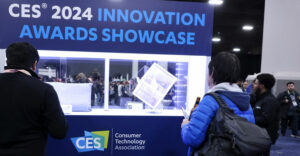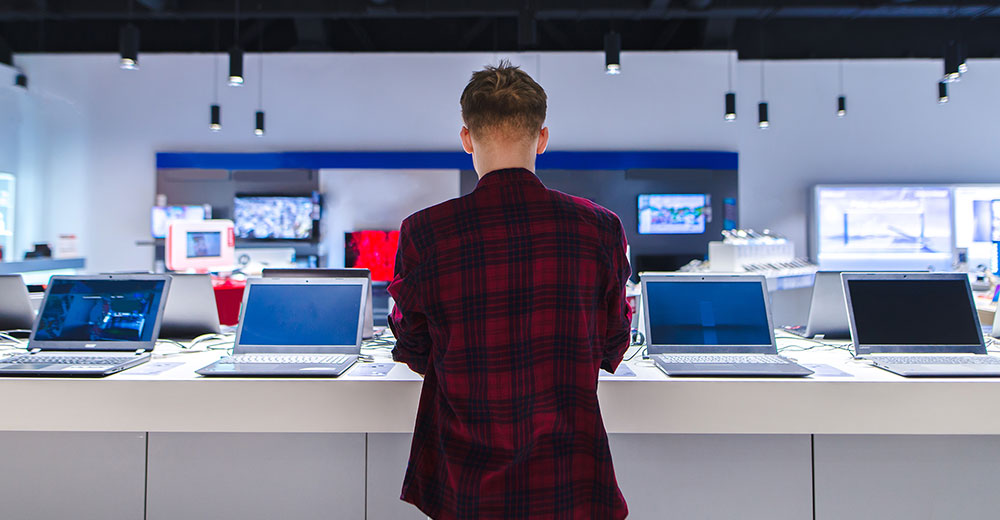It is interesting that computer terminals were introduced in the 1970s and were largely obsolete by the end of the 80s, making their service life relatively short when compared to PCs which were introduced in the late 70s and remain our primary business computing tool for more than 40 years.
This suggests it is way past time for us to move to something else.
Smartphones look promising. They have performance that rivals PCs of a few years back and can connect to cloud resources to provide nearly unlimited additional performance. But they are interface-limited, requiring someone to build out a solution that can bridge the capabilities of a smartphone and a PC.
Well, last week at Lenovo Tech World 2021, the company announced Project Unity and Ready For — with a vision for a wearable solution that could not only transform how we work, but where we work — enabling us to be productive wherever we are, coupled with a model for enterprises that appears to redefine what can be done through services.
Let’s talk about this new wave that Lenovo is driving. Then we’ll close with my product of the week, Lenovo’s new ThinkReality A3 Smart Glasses.
Wearable Computers
In the early part of this century, we had several companies building wearable computers with head-mounted displays. But not only was the technology not ready, with poor performance and high carry weights, Wi-Fi and WAN also couldn’t carry the load, and the market consolidated in a company that got caught cooking its books. This last fraud pretty much killed the company and wearable computers at the time.
However, in the decades that followed, smartphone performance, network performance, and personal area network capabilities all improved.
First movers rarely are successful. IBM created the first smartphone and drove the market adoption of PCs — but is in neither market today. In contrast, second-wave companies like Palm and BlackBerry did very well initially until Apple had a better idea; ironically, one that Microsoft and Palm came up with and discarded first, changing the overall market dynamics.
Lenovo is approaching this opportunity to redefine personal computers like BlackBerry, Microsoft, and Palm did, suggesting initial success and an imminent threat from the consumer segment.
But, given smartphones have already embraced entertainment, this threat may be moot because the base technology already fully embraces the entertainment aspects of the platform, making it unlikely for an Apple-like future pivot because that pivot has already occurred.
Lenovo’s Solution
Lenovo’s approach to this pivot isn’t to initially abandon the PC but to make it part of a more comprehensive solution.
The scenario they showcased had a woman called Angelina wearing a display-less smartphone on her arm, connected to a variety of devices around her. She can answer a text on her PC, and view a video on her TV; Angelina can put on her smart glasses and render images in 3D space, which automatically change as she looks at objects. (You can watch the video I’m talking about if you register for the Lenovo event here.)
Smart glasses drive this solution into the future as they can see what she is looking at and provide additional information through object and image recognition coupled with eye tracking.
For instance, when she looks at her digital assistant, it shows the music playing and what is next on the playlist; when she looks out the window, she also sees a weather forecast. When she looks at her tablet, it tells her it has downloaded the DLC for the game she has been playing.
You could certainly imagine that the glasses could also show the names and titles of the people she sees, information on the external objects like statues or restaurants, and alerts about dangers around her that she might otherwise not notice.
The idea of moving seamlessly from device to device, depending on need, information, or circumstances, could be very compelling. For example, I have a TV in my office, but I watch videos on my computer screen because it takes too much time to get them over to the TV. If the videos migrated to the TV automatically when I looked at it and made a selection, that would be far more convenient, and I’d be viewing on the best device for videos.
This solution could also address an ongoing problem with digital assistants waking up on trigger words from unrelated conversations or TV events. In the future, they may only respond when they know you are looking at them. Otherwise, they remain dormant, addressing some of the growing privacy concerns surrounding these products.
The connection between the devices could also be part of a two-factor solution to prevent circumstances such as people outside your home from giving them commands like “unlock the front door.” If you aren’t connected to the device through your wearable computer, it won’t accept the command.
Wrapping Up
This concept of a wearable smartphone that dynamically and automatically connects to approved devices is compelling — bringing everything from tablets and PCs to digital assistants and TVs together into a solution I find both intriguing and desirable.
We are surrounded by smart devices that could enhance our connected experiences. Still, we cannot extract the full value they might provide were they all connected because they rarely interact.
We are on the cusp of a significant change in the PC and smartphone space; while we’ve thought that one might replace the other, this idea that they could better work together with cloud resources to create something even more powerful is fascinating.
Last week I saw what the future of the PC and smartphone may be. Not one or the other, but a collective whole that is potentially greater than the sum of the parts; defining an innovative future where our devices cooperate to provide a vastly more compelling experience.

ThinkReality A3 Smart Glasses
An exciting part of what Lenovo presented was its updated smart glasses offering the ThinkReality A3 solution. These augmented reality (AR) glasses will connect to a PC or smartphone (Motorola G100) to provide multiple large virtual displays at HD resolutions.
They have built-in cameras and eye-tracking, so the connected device knows where you are looking. Recognition capabilities in the platform can then provide you with information on what or who you are looking at or automatically give you a programmed response. For instance, as I described earlier, you might look out a window and see the weather forecast automatically.
Granted, some of the metadata and related objects will need to be learned by the platform, and early on, I expect this learning is light. But as more and more people use the solution, it should get richer over time and become far more capable of connecting objects to their related metadata.
One of the significant limitations of small laptops and smartphones is screen size. I use a 49-inch monitor as my primary display; I hate using the smaller laptop screen when I travel, and there is no way I’d ever be able to work off a smartphone or typical tablet display.
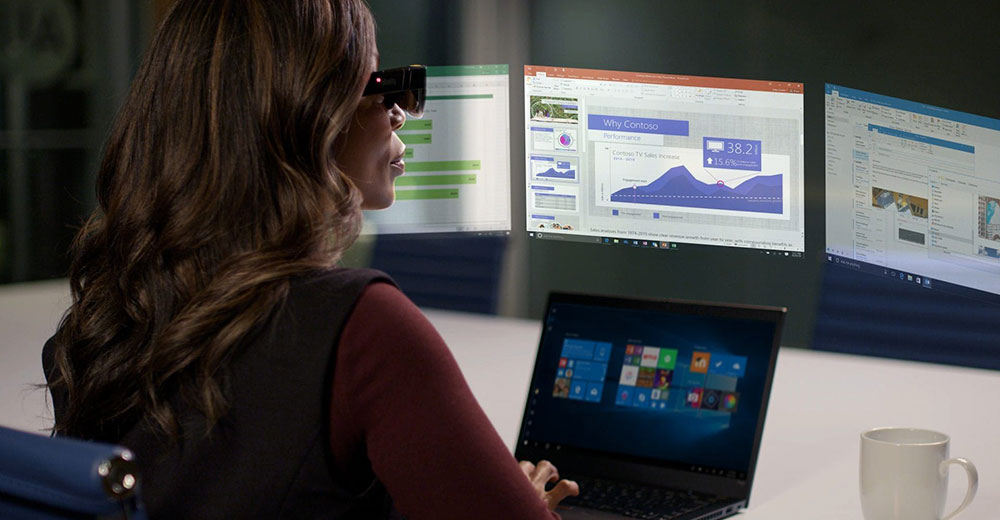
Lenovo’s ThinkReality A3 Smart Glasses
These smart glasses give you the equivalent of multiple large displays and are far more portable than any other type of display, potentially bridging my screen size anxiety.
About 20 years ago, I used a similar set of glasses without all the features and with lower resolution, designed for telemedicine by Sony. Those cost more than $21K — too expensive for me. Still, they are excellent for everything from working on documents with a seemingly larger virtual screen to watching movies or playing video games privately.
I took the Sony glasses to a LAN Party, and the gamers there lined up to use them. Lenovo’s ThinkRealty glasses are closer to $1.5K and have higher resolution and more features, resulting in an affordable solution for many of us.
The ThinkReality A3 Smart Glasses are the first to approach the idea of an accurate head-mounted display since those Sony glasses I mentioned above. Because Lenovo’s ThinkRealty A3 Smart Glasses and the advancements they represent are critical to the future of wearable personal computing, they are my product of the week.

